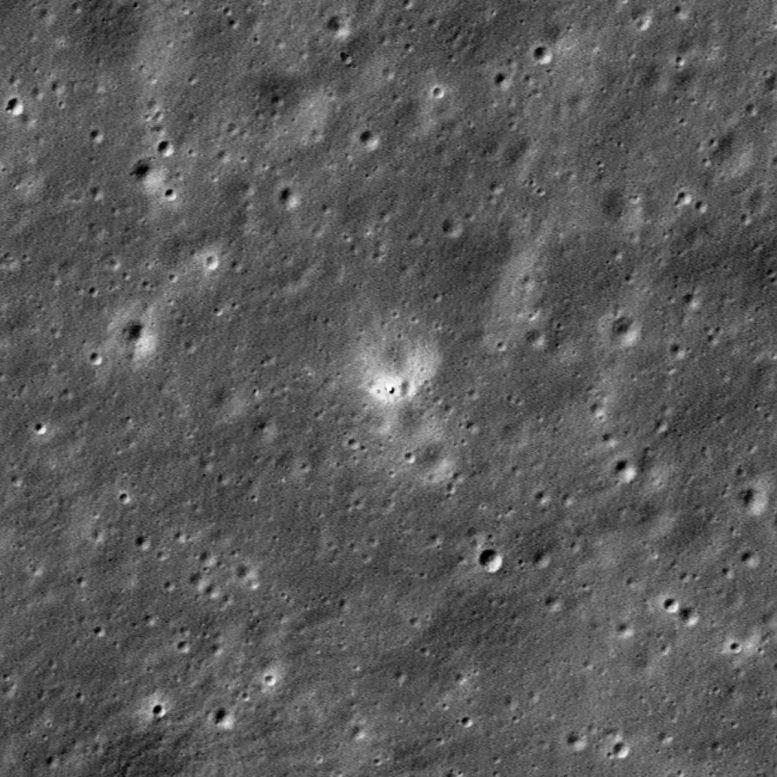
This image from NASA’s Lunar Reconnaissance Orbiter Obiter Camera shows China’s Chang’e 6 in the Apollo basin on the far side of the moon on June 7, 2024. The bump appears as a small cluster of bright pixels in the center of the image. The image is 552 meters wide; north is up. Credit: NASA/GSFC/Arizona State University
NASA‘s Lunar Reconnaissance Orbiter photographed China’s Chang’e 6 on the Moon, showing its location in a crater within the geologically rich Apollo basin, characterized by ancient basaltic flows.
NASA’s LRO (Lunar Reconnaissance Orbiter) captured a sample image of China’s Chang’e 6 spacecraft that returned to the far side of the Moon on June 7. Chang’e 6 landed on June 1, and as LRO passed through the landing about a week later, it found a photo showing the composer on the edge of an eroded, 55-yard (about 50-meter) crater.
The LRO Camera team calculated the coordinates of the landing site as approximately 42 degrees south latitude, 206 degrees east longitude, at an altitude of approximately 3.27 miles (minus 5,256 meters).
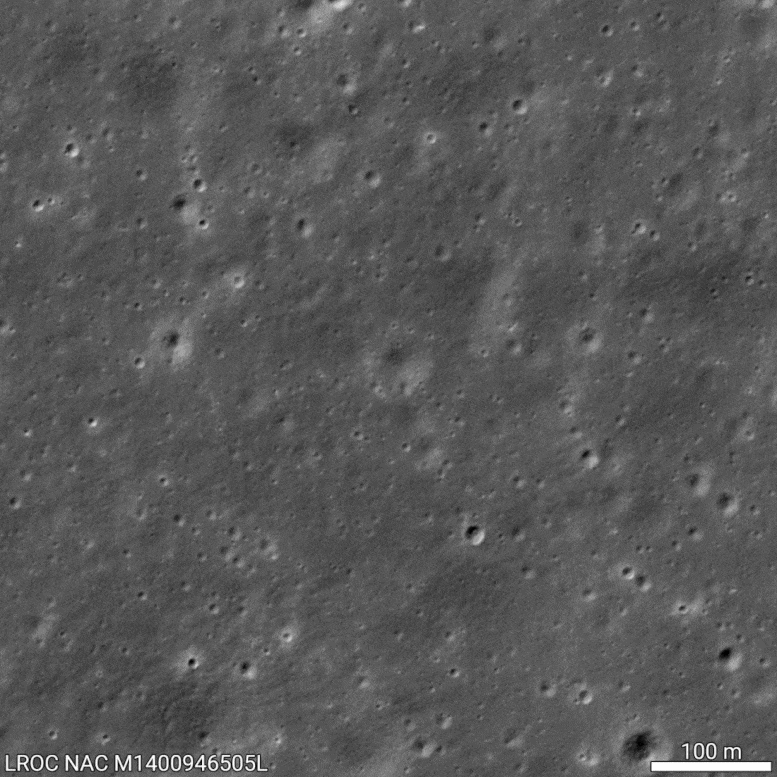
This before and after animation of LRO images shows the appearance of the Chang’e 6 lander. The increased brightness of the ground surrounding the landing area is due to disturbance from the lander’s engines and is similar to the blast zone seen around other countries. of the month. The previous image is from March 3, 2022, and the after image is from June 7, 2024. Credit: NASA/GSFC/Arizona State University
The Chang’e 6 landing site is located toward the southern edge of the Apollo basin (about 306 miles or 492 kilometers in diameter, centered at 36.1 degrees south latitude, 208.3 degrees east longitude). Basaltic lava erupted south of Chaffee S crater about 3.1 billion years ago and flowed westward until it encountered a regional high, possibly related to a fault. Several ridges of folds in this area have eroded and raised the horse’s face. The landing site sits about halfway between two of these prominent ridges. This basaltic flow also overlaps with a slightly older flow (about 3.3 billion years old), seen more to the west, but the younger flow is different because it has a high iron oxide content and an abundance of titanium dioxide.
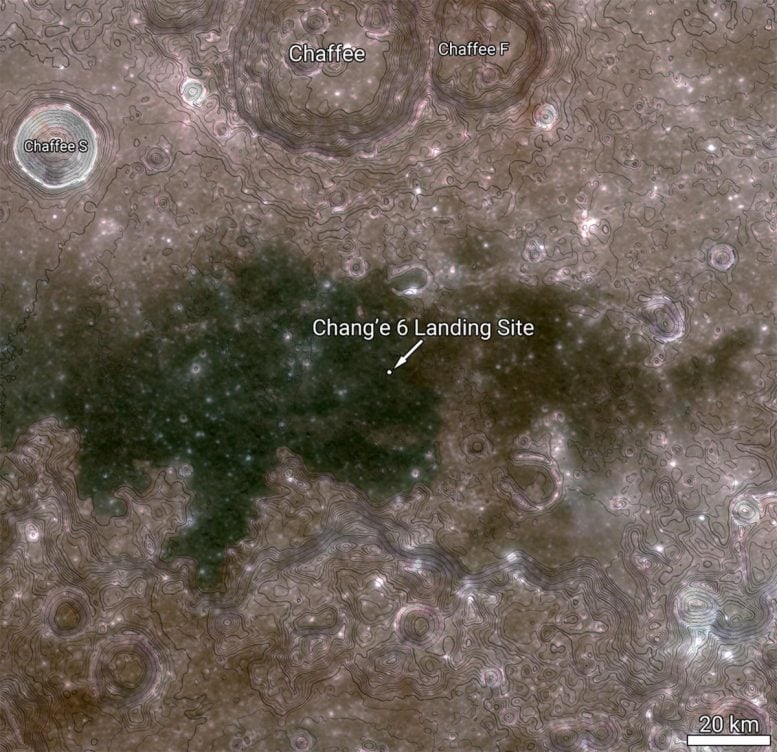
Context map of the Chang’e 6 landing site area. Color contrasts are clearly enhanced. The dark area is a mare basaltic deposit; The bluer areas of the mare are high-flow titanium. Contour lines marking elevation intervals of 100 meters (about 328 feet) are overlaid to give a sense of topography. The image is 118 miles (190 km) wide. Credit: NASA/GSFC/Arizona State University
NASA’s Lunar Reconnaissance Orbiter (LRO) is a critical instrument designed for detailed exploration of the Moon’s surface. Launched on June 18, 2009, the mission is primarily aimed at collecting high-resolution images and data to facilitate the selection of future landing sites, assess the Moon’s mineral resources, and analyze the lunar radiation environment. Armed with an array of powerful instruments, including high-resolution cameras and a laser altimeter, LRO maps the lunar surface in exceptional detail, helping scientists understand the Moon’s geology and identify areas rich in resources such as water ice.
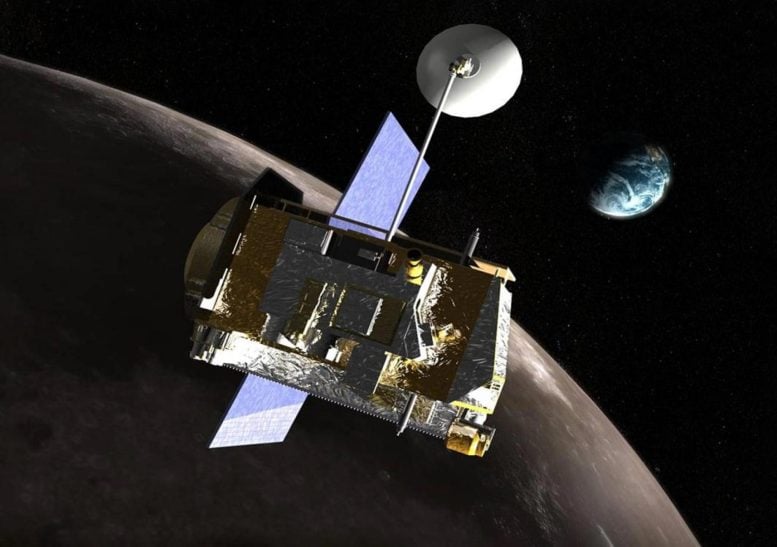
Artist’s rendering of NASA’s Lunar Reconnaissance Orbiter. Credit: NASA’s Goddard Space Flight Center
LRO has greatly advanced our knowledge of the Moon, contributing to discoveries such as confirming the presence of water ice in shadowy craters and mapping the surface temperature of the moon. Instruments such as the Lunar Orbiter Laser Altimeter (LOLA) and the Diviner Lunar Radiometer Experiment provide valuable data on the moon’s topography and thermal behavior, important for planning future human and robotic missions. By continuing to transmit critical data to Earth, LRO supports ongoing research that improves our return strategies to the Moon and beyond, making it the foundation of lunar exploration technology.
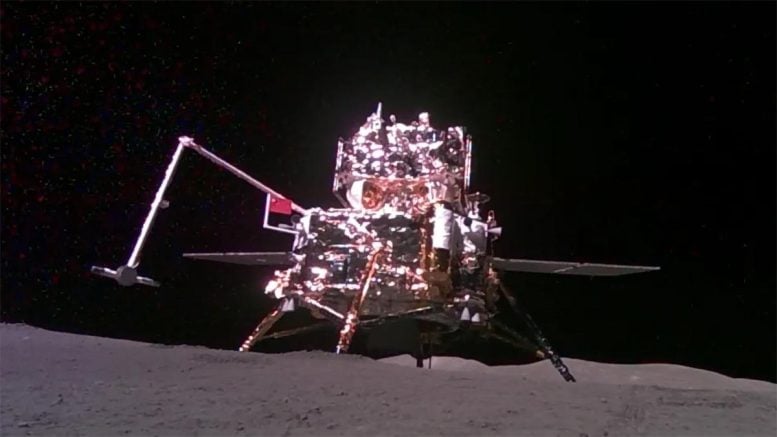
Chang’e 6 lander and take off. Credit: China National Space Administration
Chang’e 6, part of the Chinese Lunar Exploration Program and named after a Chinese goddess, is a robotic lunar probe operated by the China National Space Administration. Launched from Hainan Island on May 3, 2024, the mission consists of a lander and a mobile camera rover that touched down on the far side of the Moon on June 1, 2024. This mission, China’s second involving sample recovery, included collecting samples of the month. using a robotic scoop and drill. These samples were transferred to the ascent module, which then connected to the lander in orbit around the moon on June 6, 2024, to transfer the samples for return to Earth. In addition, the lander and rover conducted various scientific experiments on the Moon.
#NASAs #Lunar #Explorer #Spying #Chinas #Change #Spacecraft #Side #Moon


